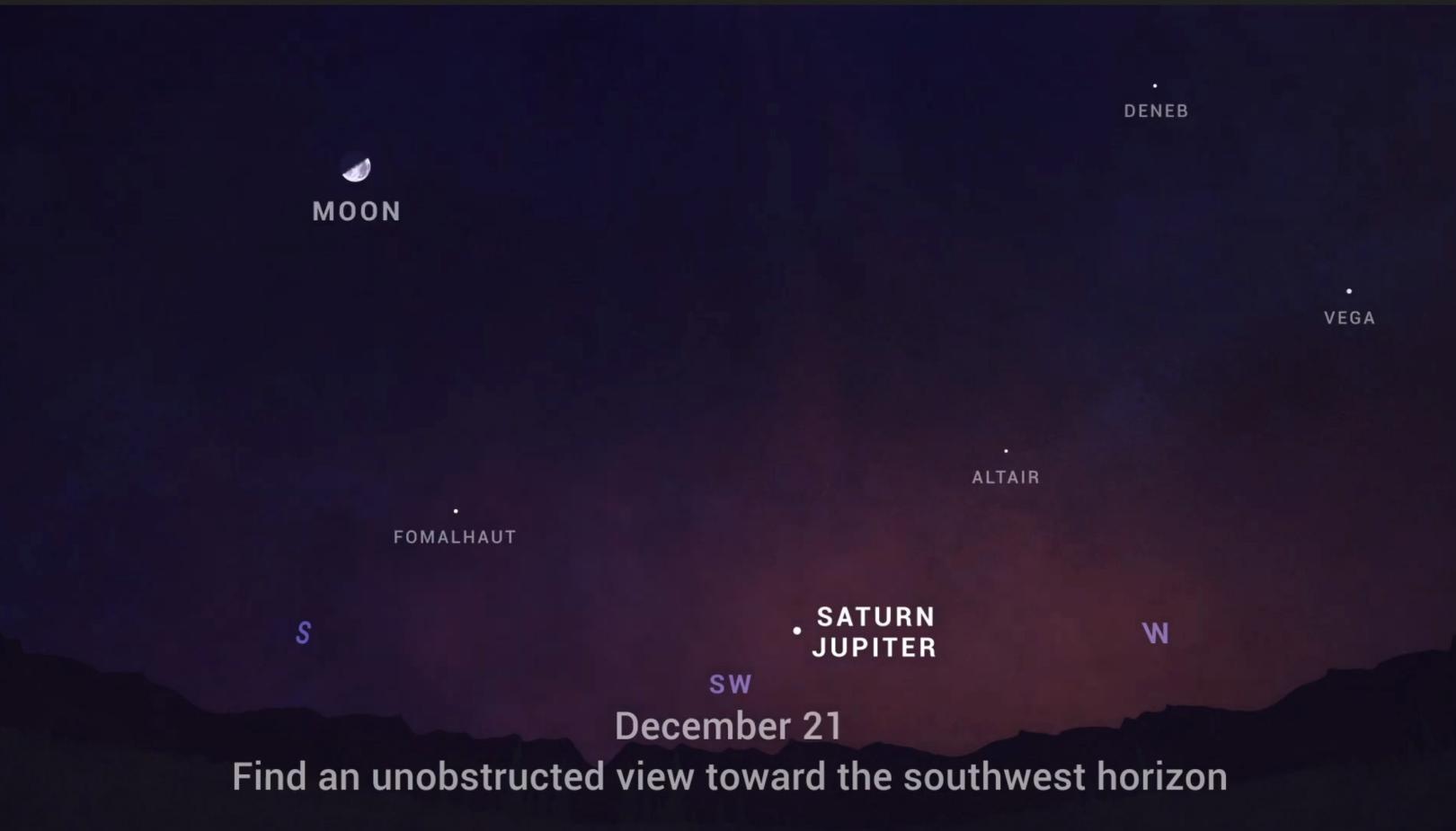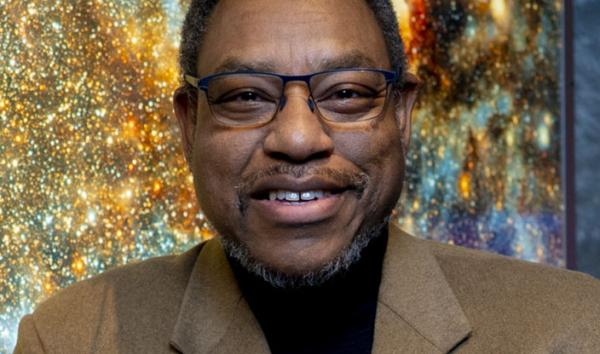
Date:
Two celestial events will occur today. The first one happens every year around this date while the second only happens every few hundred years!
The first event, Winter Solstice, happened today at 5:03 am. It’s the start of winter for the planet’s northern hemisphere and we’ll see just over 9 hours of daylight. This season is when we experience the latest sunrise times and the earliest sunset times of the year. The fewer hours of daylight also yield the coldest temperatures. Ironically, our closest approach to the sun comes in just two weeks. If we’re closer, how can it be colder, you ask? Well, it’s not our proximity to the sun that sets the temperature but the intensity of the radiation we’re receiving. The difference is connected to the Earth’s axial tilt, 23.5 degrees away from vertical. Today our axis of rotation reaches its maximum tilt away from the sun. Solar radiation reaching the northern part of our planet is spread over a wider footprint because we’re tilted away. During our northern summer, our axis is tilted 23.5 degrees towards the sun so sunlight falls more directly onto Earth’s surface. We experience nearly 16 hours of daylight on the first day of summer. Combined with additional hours of sunlight, we experience warmer temperatures during summer months. Living in the southern hemisphere? Just reverse everything and today is your first day of summer!
The second event is tonight’s conjunction - a meeting in the sky of two planets - Jupiter and Saturn. The two have been visible as two bright dots very low in the southwest just after sunset since November, but tonight they will appear to merge into one object.

Image courtesy of NASA
To see the merger, you only need clear skies and a clear view to the southwest. Binoculars will help and a telescope will give better magnification, but neither are necessary. Jupiter is the larger and brighter one, while Saturn is just above Jupiter and slightly to the left. These two planets are occasionally close in the sky (every 20 years or so), but the last time they were this close was over 800 years ago; their next really close pass will be in 2080. Actually, the planets are not close to each other at all, they just look that way from Earth. Right now, Jupiter is 547 million miles from Earth and Saturn is another 403 million miles beyond Jupiter! Look for the planets to begin separating later this week. Their apparent motion in the sky is caused by our Earth’s more rapid orbital velocity around the sun. That makes it look like Jupiter and Saturn are converging, then separating as the Earth zips past ahead of them. Many viewers are referring to this conjunction as the ‘Christmas Star’ because the timing of the event is so close to the Christmas holiday. Another interpretation of the ‘Christmas Star’ description refers to major planetary conjunctions seen around the time of Jesus’ birth over 2000 years ago. The ‘Three Wise Men’ or ‘Magi’ are thought to have been astrologers for whom planetary conjunctions would have been indicative of auspicious events. But planets had not yet been identified as such, so the Wise Men would’ve described what we now know to have been a planetary conjunction, as a special star of significance. The rest, as they say, is biblical scripture! It’s only coincidence that these two events, Winter Solstice and the conjunction, are happening on the same day.
Weather permitting, Lowell Observatory in Flagstaff, AZ will live stream the event on their YouTube channel.
You can hear Pitts’ comments about the conjunction on this NPR report.


